Fitbit’s efforts in the fitness tracker market have not gone unnoticed in recent years. But for all its success in the sub-$200 fitness tracker space, the company’s lower-end options like the Inspire 2 offer questionable value compared to cheaper alternatives from Xiaomi and Huawei. The Fitbit Luxe is different. It’s designed with jewelry in mind and is an attractive alternative to the silicone band-touting wearables we see all too often in the budget space. Read our full Fitbit Luxe review to learn more about Fitbit’s pretty new fitness tracker.
What you need to know about the Fitbit Luxe

- Fitbit Luxe: $149.95/€149.95/£129.99/Rs.10,999/$199.95 CAD
- Fitbit Luxe Special Edition: $199.95/€199.95/£179.99/Rs.17,999/$249.95 CAD
The Fitbit Luxe is a basic fitness and health tracker with an emphasis on aesthetics. It’s small, lightweight, and one of the best-looking trackers the company has made in recent years.
In terms of features, the Luxe is about as basic as Fitbits come. It will keep track of your steps, distance, and calories throughout the day, and is capable of tracking 20 different sport modes. There’s no standalone GPS onboard, but it does support many of Fitbit’s newer health-monitoring features like stress management and sleep scores.
Fitbit buyer’s guide: Everything you need to know
Despite the limited feature set, the Luxe costs more than the fully featured Fitbit Charge 4. You can purchase one now from Fitbit.com and other retailers for $150 in Lunar White/Soft Gold, Black/Graphite, and Orchid/Platinum colorways. There’s also a special edition Luxe that comes with a Gorjana Soft Gold stainless steel link bracelet for $50 more. Functionally, there’s no difference between the standard and special edition models.
As a bonus, Fitbit is throwing in a free six-month trial to Fitbit Premium. If you’re a new Fitbit user, that adds some much-needed value to the tracker’s higher price tag.
How’s the jewerly-like design?
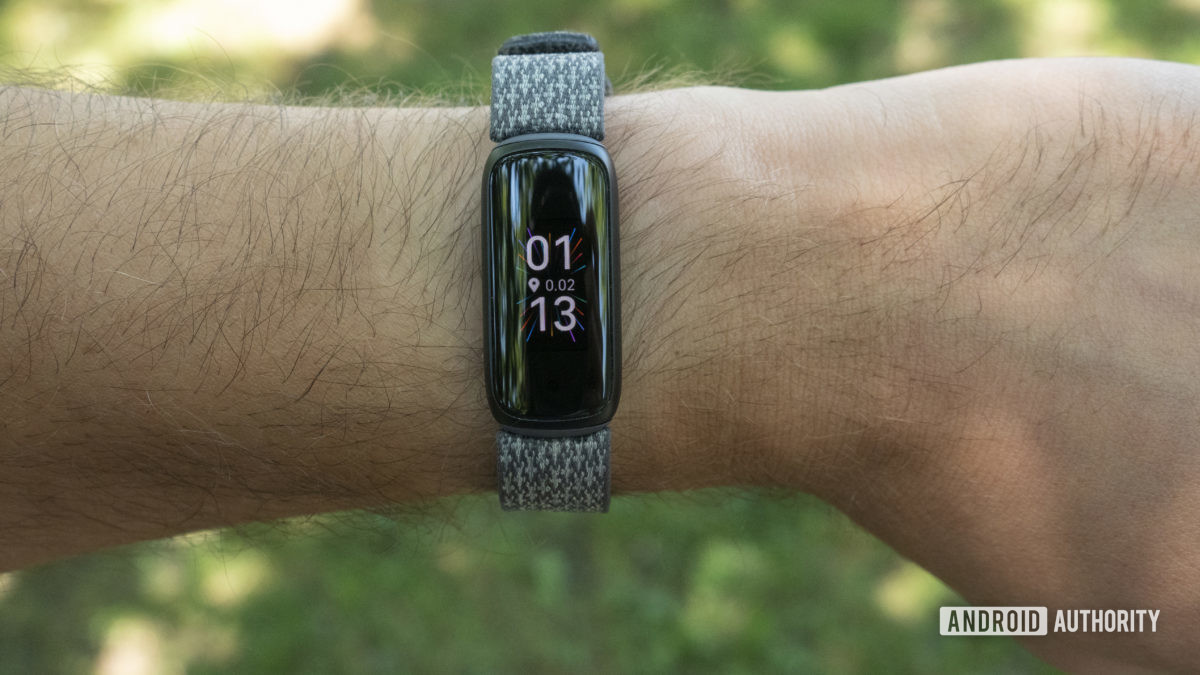
Design is everything for the Fitbit Luxe. It still resembles a basic fitness band, but you can dress it up to make it look more like a normal bracelet.
The Luxe has a stainless steel tracker module, which feels notably more high-end than the plastic cases found on the Mi Band line. Each tracker comes with a set of silicone bands. They’re nice and soft and don’t collect much hair or dust.
Design is everything for this fitness tracker. The Luxe is the prettiest wearable Fitbit has ever made.
The real fun is digging through Fitbit’s lineup of bracelet-like straps for the Luxe. You can find stainless steel link and mesh options, as well as leather and woven straps. I particularly like the slate woven band that shipped with my Fitbit Luxe review unit. Note that these are proprietary straps on a new product, so you’ll most likely need to buy replacement straps directly from Fitbit for a while before decent third-party options show up at other retailers.
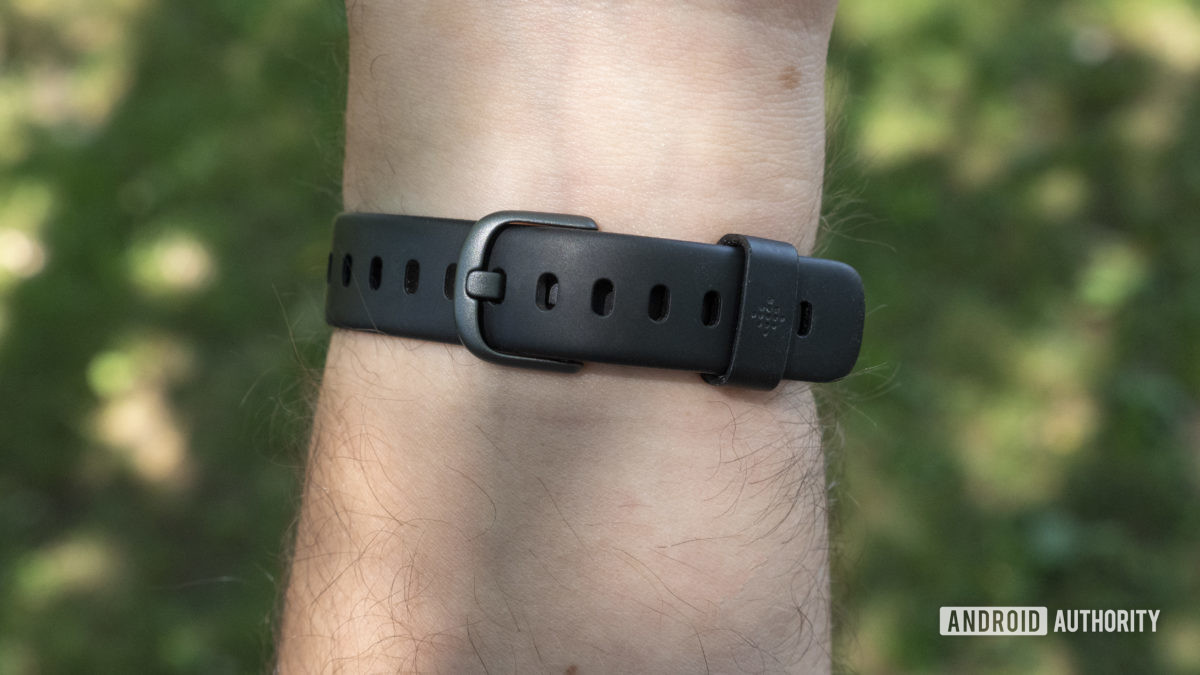
Unlike other Fitbit wearables, the Luxe does not have a physical button on the side. All navigation on the device is to be done via taps and swipes on the touchscreen (more on that in a minute). I like physical buttons on my fitness watches — it’s far easier to stop a workout by pressing a button instead of swiping around on a sweaty little screen. Though, I’m aware the buttonless design makes the Luxe look more like a bracelet.
See also: The best Fitbit smartwatches you can buy
The Luxe has a small color AMOLED screen. It can get bright enough outdoors in direct sunlight, and there’s an ambient light sensor to adjust the brightness in different lighting conditions. I think the display is too small. Considering the overall size of the Luxe’s case is much larger than the display itself, there’s certainly room for improvement here. Check out the photo below to see it compared to the Xiaomi Mi Band 6, a $60 fitness tracker with an edge-to-edge screen.
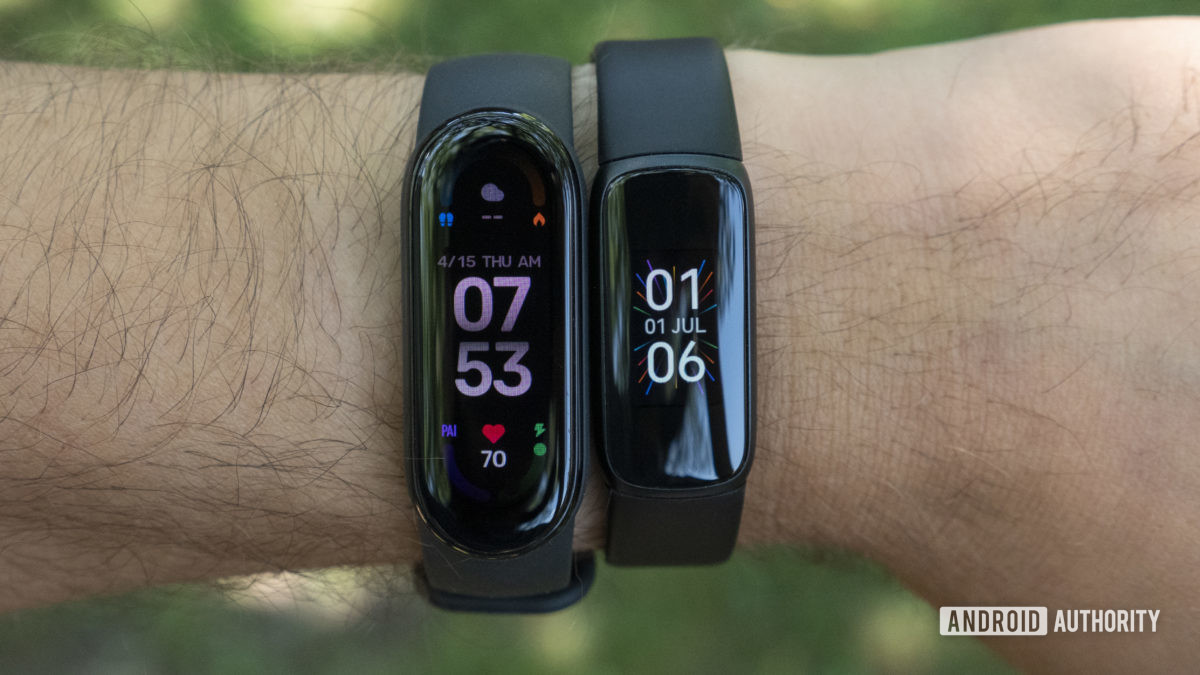
Fitbit launched a new swipe-based interface on the Luxe, different from the OS that’s found on the Inspire 2 and Charge 4. The menus are laid out intuitively: swipe up for activity and health stats, down for settings, and left/right for workouts and everything else (notifications, alarms, timers). You can also double-tap the screen to go back to the watch face.
Despite its overall small size, the Fitbit Luxe is capable of lasting up to five days on a single charge. That’s half of what the similarly sized Inspire 2 offers, albeit with a much lower-resolution display. In my testing, the Luxe has been able to last just short of the five-day mark. I’ve been using the device heavily, though — if you only exercise once or twice a week, you should have no problem getting it to last the full five days.
How does it perform?
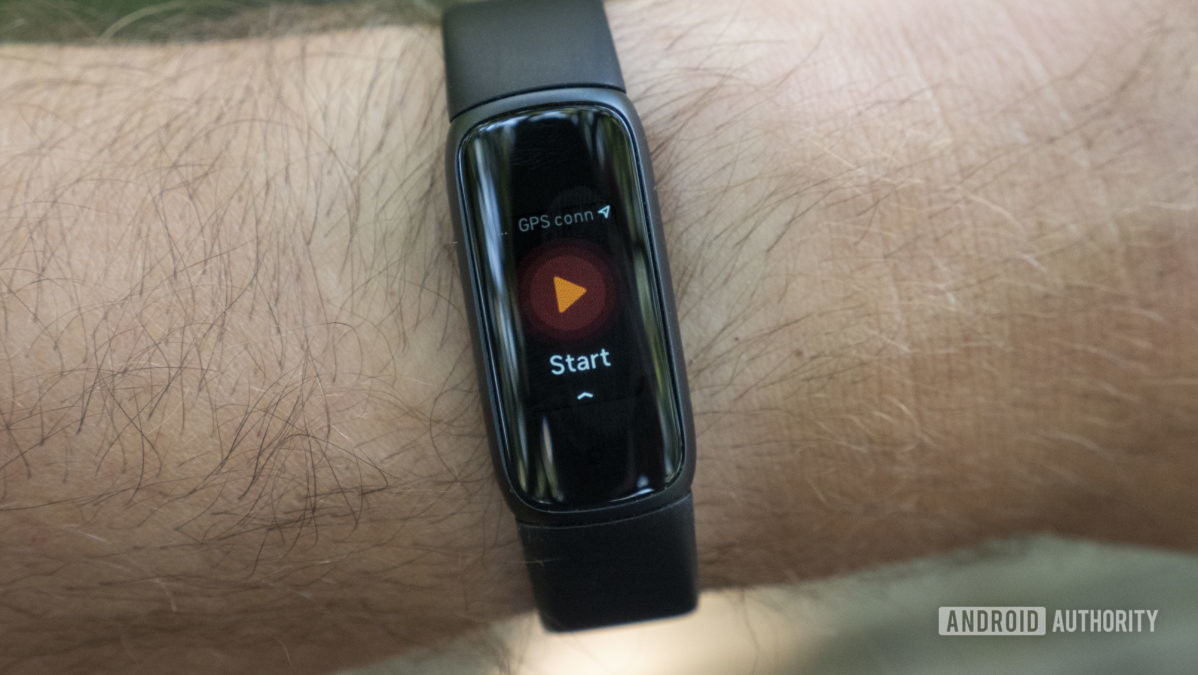
Those looking for a basic activity tracker will be happy with the Fitbit Luxe’s feature set. It can track 20 different activities and keeps tabs on your step count, distance, and calorie burn throughout the day. It also monitors your resting and active heart rate, which we’ll get to in a moment.
All the basic metrics are tracked well. Fitbit devices tend to over-report daily step counts compared to trackers from other brands, but I don’t think the Luxe is the worst offender in this case. Distance and calorie burn metrics were generally on par with my Garmin Fenix 6 Pro’s data.
Also read: The best running watches you can buy
The Fitbit Luxe does not have standalone GPS, though it does have connected GPS. That means you’ll need to take your phone with you in order to use GPS during an activity. Considering the Fitbit Charge 4 — a cheaper and older tracker — boasts standalone GPS, we expected the Luxe to come with full-on GPS, too.
The Luxe picked up my Pixel 5’s GPS signal within a minute or two on a few runs but struggled to make a connection for a few other activities. Previous Fitbits have struggled in this area as well.
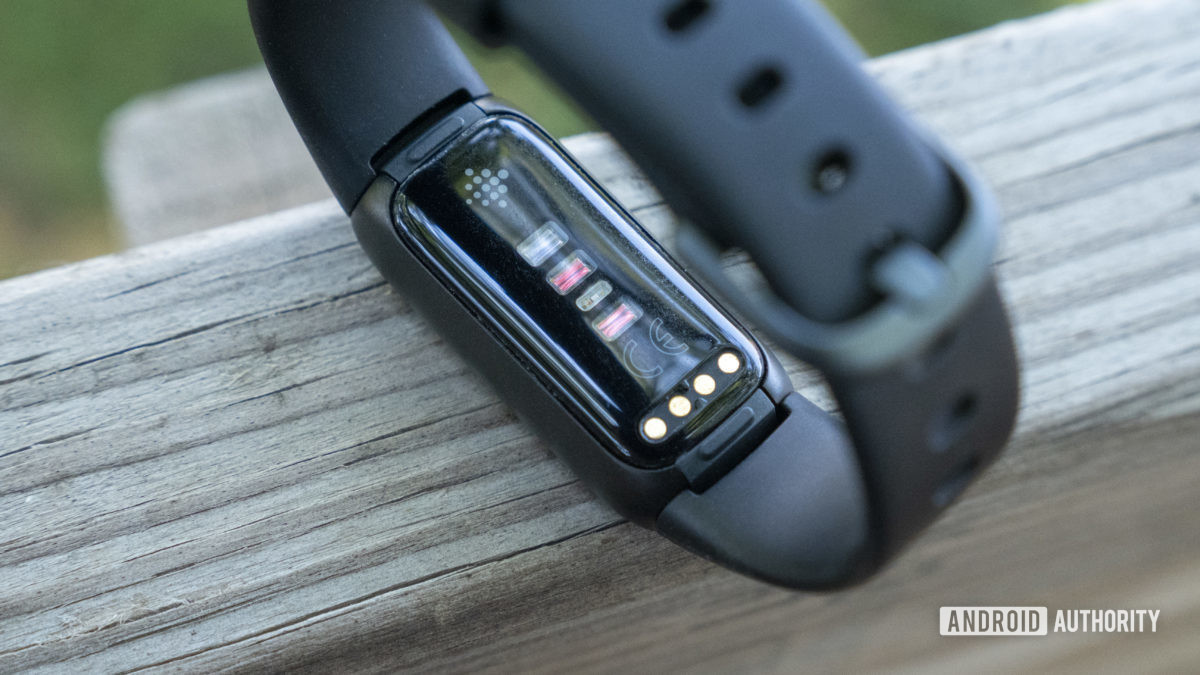
The Luxe comes with an optical heart rate sensor to track your heart rate throughout the day and night, and during activities. It has the same PurePulse algorithm that features on the Charge 4 and Inspire 2. Resting heart rate readings from the Luxe have been spot-on with data from the Fenix 6 Pro and Polar H10 chest strap.
The heart rate sensor can also hold its own during high-intensity workouts, for the most part. I ran a half-marathon with the Fenix 6 Pro and Fitbit Luxe, which you can see below. (Please ignore the stark lines at the 30-minute mark. I have no idea why both devices freaked out at that time.)
As you can see, the Luxe kept up with the Fenix 6 Pro for the majority of this portion of the run. Impressive, but I can’t say I was pushing it to its limits.
Another interval workout against the Fenix 6 Pro and Polar H10 started to show some faults in the Luxe’s sensor. During a nine-mile run, the Luxe kept up well with the other heart rate sensors but unfortunately failed to catch two big dips towards the end of the run, which the Fenix 6 Pro and H10 both reported accurately. Overall, though, the Luxe showed it was able to keep up.
TL;DR, most people will be happy with the Luxe’s heart rate tracking capabilities. If you’re really nitpicky about this type of data, what are you doing buying a Luxe in the first place?!
The Luxe also keeps track of your heart rate zones during workouts. Fitbit awards you Active Zone Minutes based on how many minutes of moderate to vigorous activity you achieve during your workouts. As we’ve said before, it’s a useful metric that can help paint a better picture of your activity level for the day.
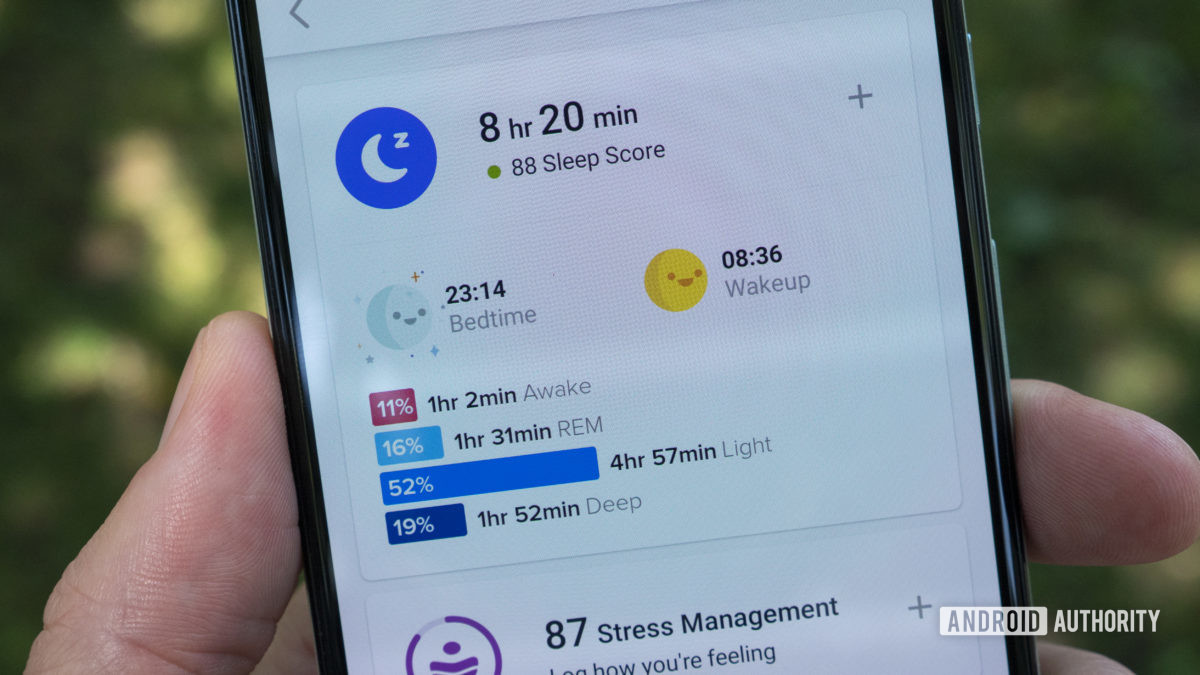
Fitbit devices are usually among our top picks for the best sleep trackers out there, and the Luxe does not disappoint. It tracks your sleep stages (light, deep, REM), total time asleep and awake, and gives you a sleep score based on how well you slept. The Luxe picked up on my bedtime and wake-up times every night, and the sleep score provided in the morning was spot-on with Garmin’s. More importantly, I found Fitbit’s sleep score to consistently and accurately reflect how well-rested I felt the next morning.
If you’re a Luxe user, you’re probably also a Fitbit Premium subscriber. If that’s the case, you’ll get the benefit of nighttime breathing rate data in the Fitbit app’s Health Metrics dashboard. I don’t disagree with Fitbit’s breathing rate data, but I do think the presentation could be improved. For starters, it’s tucked away in the Health Metrics dashboard and not accessible from the sleep data page, leaving you to hunt for it if you want to check on your numbers.
The Health Metrics dashboard as a whole is no doubt useful for Fitbit users, though it could use some work. You’ll want to check out our full Fitbit Premium review to see what I mean.
Anything else?

- Charging cable: The Luxe comes with a proprietary, magnetic charging cable. The charger is fine, but we’d really like to see Fitbit implement a one-size-fits-all charging cable for all its devices. This could result in less e-waste and lower manufacturing costs for the company.
- Watch faces: There are 20 watch face options available for the Fitbit Luxe. Since this is Fitbit’s first tracker with an AMOLED screen, almost all of the faces feature bright colors and fun animations.
- Smart features: The Luxe is primarily a fitness device, so smart features are limited. It’ll relay your smartphone notifications, give you bedtime reminders, and allow you to turn off alerts completely with do not disturb and bedtime modes. It also features Smart Wake alarm and timer apps and is compatible with Android and iOS. Unfortunately, there’s no Fitbit Pay support on the Luxe.
- IP rating: The Fitbit Luxe has a 5ATM water resistance rating. Feel free to shower or take a dip in the pool with it on your wrist.
- No altimeter: There’s no altimeter in the Luxe, so don’t expect accurate elevation data.
- Blood oxygen monitoring: The Fitbit Luxe will be able to record your blood oxygen levels “soon.” Fitbit wasn’t able to give Android Authority a projected date for the feature. When it arrives, it’ll be able to track your oxygen saturation each night and provide weekly trends in the Fitbit app. Read more about SpO2 monitoring here.
- Side note: Can Fitbit please start launching products with all their features enabled? It’s almost expected for a new Fitbit to launch with a few “coming soon” features.
- Menstrual cycle tracking: The Luxe supports Fitbit’s menstrual cycle tracking feature, allowing you to see where you are in your cycle, log symptoms, and more.
- Stress and relaxation: The Fitbit Luxe tracks your stress based on a few different factors like your body’s responsiveness, exertion, and sleep patterns. It combines all of this data to give you a stress management score from 1-100. The Fitbit app does a nice job at explaining how your score breaks down and gives you tips on how to improve each one. And if you’re feeling a little too stressed in the moment, the Luxe also provides an on-device Relax app to help you take a few minutes of mindful breathing.
Value and competition
The prettiest Fitbit
In terms of pricing and overall features, the Fitbit Luxe’s main competition is the Fitbit Charge 4 ($149). The older tracker has most of the same features as the Luxe, plus standalone GPS in case you want to track a bike ride without your phone nearby. Fitbit also offers plenty of nice-looking straps for the Charge 4, so you can dress it up however you’d like. It’s currently available for $20 cheaper than the Luxe, too.
Many of the Fitbit Luxe’s features and accessory options are geared towards women, so it makes sense Garmin — one of Fitbit’s biggest competitors — would also have a female-focused device you should pay attention to. The Garmin Lily ($199) is an attractive fitness tracker-smartwatch hybrid that, in our opinion, wins out in aesthetics compared to the Luxe. The Lily offers accurate heart rate and sleep tracking and an easy-to-understand UI at a reasonable price.
Related: The best cheap fitness trackers you can buy
If you’re looking for a more advanced pick but still want something customizable and pretty, check out the Garmin Venu Sq ($199). It boasts onboard GPS, long battery life, Garmin Pay, and lots of fitness tracking features.
If all you’re after is an attractive wearable and don’t care much about what the device tracks, consider the Withings Move ($69). This hybrid smartwatch tracks basic activity stats and can be customized to your heart’s content. The best part? It’s half the price of the Luxe.
Fitbit Luxe review: The verdict

I don’t think the Luxe line is going to take over the Charge line anytime soon, but I do think it lays the groundwork for what we’ll see in future Fitbits. The AMOLED display — albeit too small — is far nicer to look at compared to the Charge line’s grayscale OLED. The improved design over the drab Inspire 2 is also important to note; the differences between the Luxe and Inspire 2 are immense, both in build quality and aesthetics.
The Fitbit Luxe is a pretty fitness tracker that can handle the basics — and that’s about it.
At $150, the Luxe is in an incredibly competitive price bracket. Those wanting something more functional — say, something with GPS or a bigger screen — should probably opt for one of the many smartwatch alternatives. And while the Luxe is pretty and customizable, that’s really its only standout feature. However, it’s not so pretty that I’d recommend it over the Charge 4.
The Fitbit Luxe is a good fitness tracker at a price that’s just OK. If you know what you’re signing up for, I think you’ll be happy with the Luxe. Just keep in mind there are plenty of other options in this price range that might make a more sensible purchase.
Next: Fitbit Charge 5: What we want to see from Fitbit’s next fitness tracker
